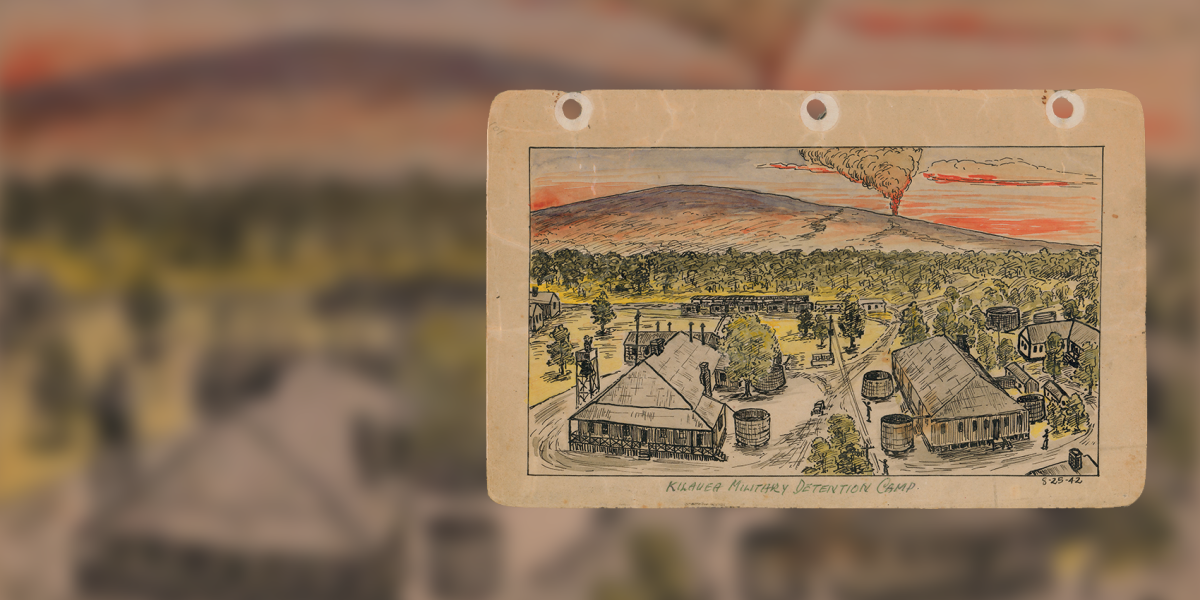
1943–1944
The concentration camp at Jerome had no guards in the watchtowers because, unlike most of the other concentration camps, it was surrounded by swamps infested with poisonous snakes. Hoshida’s wife, Tamae, had “voluntarily evacuated” to the mainland with the hope that she could be reunited with her husband. In the middle of winter, two months after the birth of their youngest daughter, Tamae traveled from Hawai‘i to Jerome, Arkansas. The journey was very difficult: two of Hoshida’s daughters became very ill, one so seriously ill that she nearly died.
Although “military necessity” was invoked to justify the incarceration of Japanese Americans, the government was inconsistent in its actions. In Hawai‘i, only community leaders like Hoshida were incarcerated. On the mainland, community leaders were first taken away. Then, by summer 1942, all Japanese Americans living in the Western Defense Command zone were subject to incarceration. Nearly 120,000 men, women, and children were unfairly placed in ten War Relocation Authority concentration camps. Nearly two-thirds of those incarcerated were American citizens by birth. In Hawai‘i, incarceration was selective, though still without due process. Without hypothesizing why the government held such unfounded fear about Japanese Americans on the mainland, the fact remains that the economy of Hawai‘i would have collapsed without the labor and skills of the Japanese American community.
One year after Tamae’s arrival to Jerome, the Hoshidas were finally reunited. Hoshida continued to draw, making his family and their life together as his subjects. The family shared a very small barracks together, which Hoshida depicted in some of his drawings. The Hoshida’s remained at this camp until it was closed June 30, 1944, and were subsequently transferred to Gila River, Arizona for the remainder of the war.




